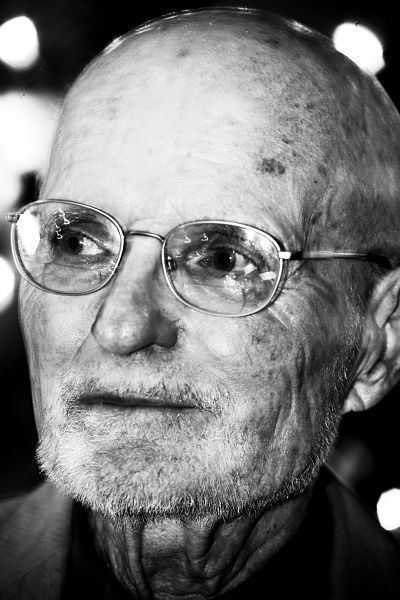Nationality American Movies End of the Road | Period 1956–present Siblings Jill Barth, Bill Barth Name John Barth | |
 | ||
Influenced by Jorge Luis Borges, Vladimir Nabokov, Italo Calvino, James Joyce, Samuel Beckett, Machado de Assis Books Lost in the Funhouse, The Sot‑Weed Factor, The Floating Opera, The End of the Road, Giles Goat‑Boy Similar People Donald Barthelme, Thomas Pynchon, William Gaddis, William H Gass, David Foster Wallace | ||
A conversation with john barth and michael silverblatt
John Simmons Barth (; born May 27, 1930) is an American writer, best known for his postmodernist and metafictional fiction.
Contents
- A conversation with john barth and michael silverblatt
- 11 john barth lost in the funhouse
- Life
- Literary work
- Styles approaches and artistic criteria
- Essays
- Awards
- Fiction
- Nonfiction
- References

11 john barth lost in the funhouse
Life

John Barth, called "Jack", was born in Cambridge, Maryland. Barth has an older brother, Bill, and a twin sister, Jill. He briefly studied "Elementary Theory and Advanced Orchestration" at Juilliard before attending Johns Hopkins University, from which he received a B.A. in 1951 and an M.A. in 1952 (for which he wrote a thesis novel, The Shirt of Nessus).

Barth was a professor at The Pennsylvania State University from 1953 to 1965, where he met his second and current wife, Shelly Rosenberg. During the "American high Sixties," he moved to teach at University at Buffalo, The State University of New York from 1965 to 1973. In that period he came to know "the remarkable short fiction" of the Argentine Jorge Luis Borges, which inspired his collection Lost in the Funhouse.

He then taught at Boston University (visiting professor, 1972–73) and Johns Hopkins University (1973–95) before retiring in 1995.
Literary work

Barth began his career with The Floating Opera and The End of the Road, two short realist novels that deal wittily with controversial topics, suicide and abortion respectively. They are straightforward realistic tales; as Barth later remarked, they "didn't know they were novels".

The Sot-Weed Factor (1960) was initially intended as the completing novel of a trilogy comprising his first two "realist" novels, but, as a consequence of Barth's maturation as a writer, it developed into a different project. The novel is significant as it marked Barth's discovery of postmodernism.
Barth's next novel, Giles Goat-Boy (about 800 pages), is a speculative fiction based on the conceit of the university as universe. Giles, a boy raised as a goat, discovers his humanity and becomes a savior in a story presented as a computer tape given to Barth, who denied that it was his work. In the course of the novel Giles carries out all the tasks prescribed by Joseph Campbell in The Hero with a Thousand Faces. Barth kept a list of the tasks taped to his wall while he was writing the book.
The short story collection Lost in the Funhouse (1968) and the novella collection Chimera (1972) are even more metafictional than their two predecessors, foregrounding the writing process and presenting achievements such as a seven-deep nested quotation. Chimera shared the U.S. National Book Award for Fiction.
In the novel LETTERS (1979), Barth interacts with characters from his first six books.
His 1994 Once Upon a Time: A Floating Opera, reuses stock characters, stock situations and formulas.
Styles, approaches and artistic criteria
Barth's work is characterized by a historical awareness of literary tradition and by the practice of rewriting typical of postmodernism. He said, "I don't know what my view of history is, but insofar as it involves some allowance for repetition and recurrence, reorchestration, and reprise [...] I would always want it to be more in the form of a thing circling out and out and becoming more inclusive each time." In Barth's postmodern sensibility, parody is a central device.
Around 1972, in an interview, Barth declared that "The process [of making a novel] is the content, more or less."
Barth's fiction continues to maintain a precarious balance between postmodern self-consciousness and wordplay and the sympathetic characterization and "page-turning" plotting commonly associated with more traditional genres and subgenres of classic and contemporary storytelling.
Essays
While writing these books, Barth was also pondering and discussing the theoretical problems of fiction writing.
In 1967, he wrote a highly influential and to some controversial essay considered a manifesto of postmodernism, The Literature of Exhaustion (first printed in The Atlantic, 1967). It depicts literary realism as a "used-up" tradition; Barth's description of his own work, which many thought illustrated a core trait of postmodernism, is "novels which imitate the form of a novel, by an author who imitates the role of author".
The essay was widely considered a statement of "the death of the novel", (compare with Roland Barthes's "The Death of the Author"). Barth has since insisted that he was merely making clear that a particular stage in history was passing, and pointing to possible directions from there. He later (1980) wrote a follow-up essay, "The Literature of Replenishment", to clarify the point.
